
Microsoft Teams: a smart way to deliver cost-savings, save clinical time, and improve patient care
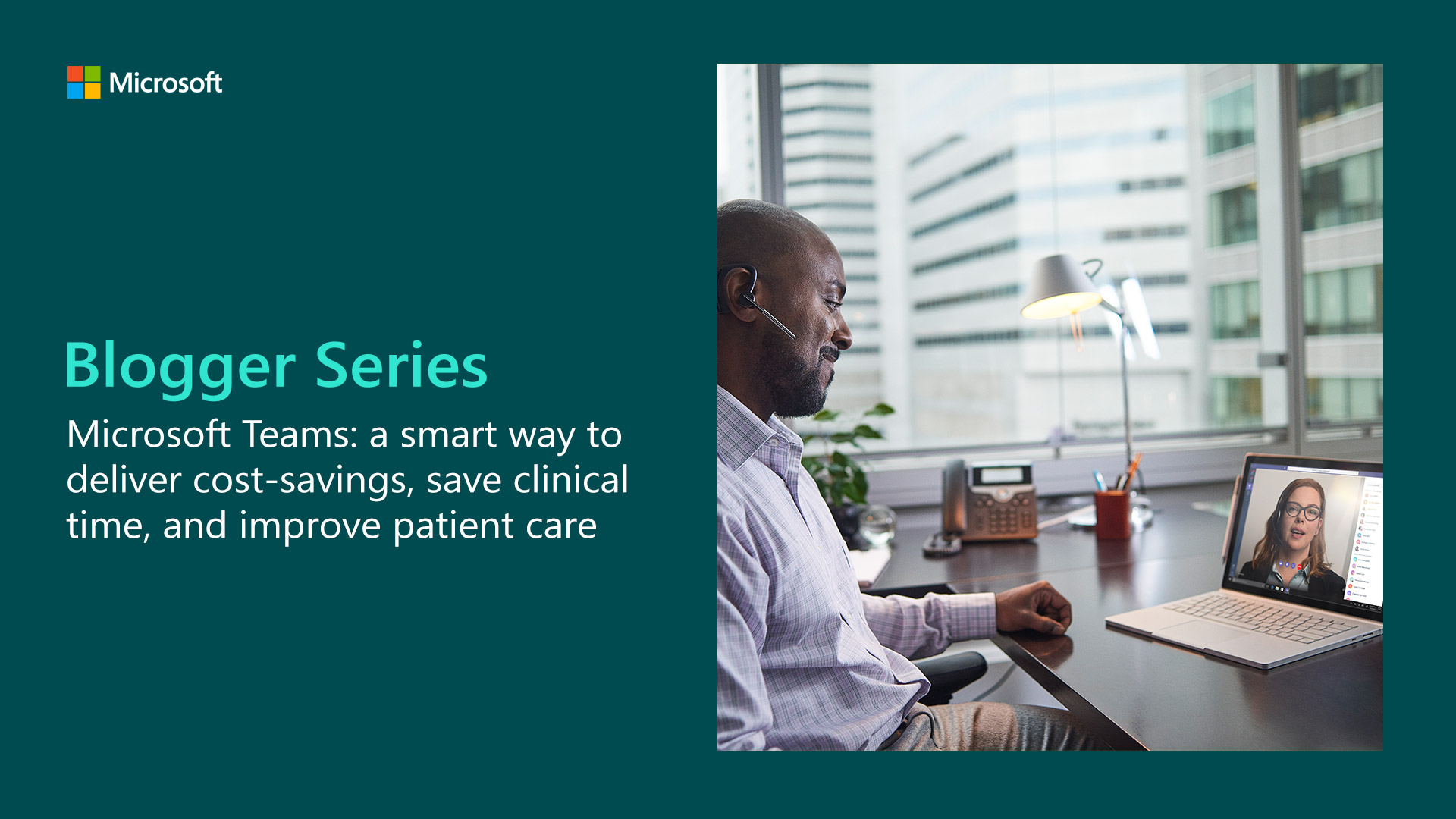 Microsoft Teams is the fastest growing application in Microsoft history and there’s been much excitement around the technology’s huge potential in the NHS. When healthcare was chosen as a vertical focus for engineering Microsoft Teams, I put my money where my mouth is and moved into a new role, leading the charge for Teams for healthcare across Europe.
Microsoft Teams is the fastest growing application in Microsoft history and there’s been much excitement around the technology’s huge potential in the NHS. When healthcare was chosen as a vertical focus for engineering Microsoft Teams, I put my money where my mouth is and moved into a new role, leading the charge for Teams for healthcare across Europe.
For those who have never heard of Teams, it’s part of the Office 365 suite of applications and is a digital workspace that’s centred around secure chat, meetings, calls and files, combining all of Microsoft’s modern workplace applications inside one platform. Since its launch in 2017, Microsoft Teams has grown rapidly, driven by its impact on the productivity and digital transformation of workflow processes for employees. Teams’ extensibility as a platform can bring together information from siloed operational systems, such as line of business apps.
This is where it gets really exciting for healthcare, enabling clinicians to collaborate in real-time around patient information and patient flows from data and insights across a variety of clinical systems—all in one secure hub that minimizes switching between apps.
My first job in my new role, was to get my arms around this: What does the technology mean for healthcare? What real-life scenarios and results are we already seeing within the NHS?
In June, we hosted our first Teams for Healthcare hack with our partner Modality. 16 NHS customers, NHSD and partners came together to share best practices and learn how Teams is transforming services and flows across the NHS. The event has allowed us to hear, first-hand, the impact Teams has on workforces that use it every day.

Turn it ON for chat
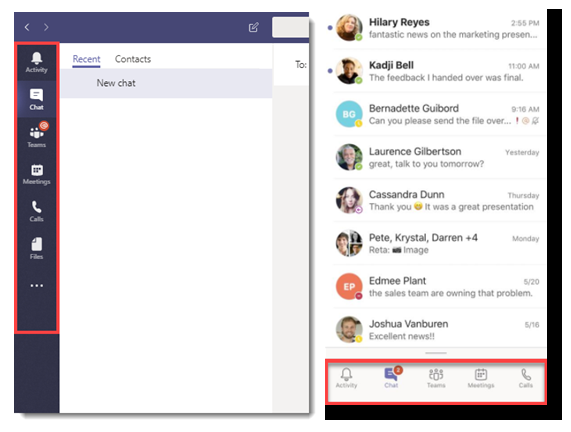
The resounding agreement from everyone in the room was “let’s get Teams turned on.” There are employees that access Office 365, yet haven’t deployed Teams, with some workplaces unaware that they even have it! Yes, there are things we need to ensure get completed before rolling it out – network checks, Active Directory, and ensuring mobile security policies and solutions are in place – but our account teams stand ready to help you with this. Many NHS trusts, having completed much of the pre-work, are already using Exchange Online for secure mail.
Teams is based around security and delivering compliant chat capabilities. For healthcare this year, we added new secure messaging capabilities to Teams, including priority notifications and message delegation. We also introduced a smart camera with image annotation and secure sharing, so images stay within the platforms and aren’t auto-stored to the care providers’ devices.
The NHS customers all agreed it’s vital to replace the use of consumer apps that are not compliant with PID. They plan to make it simple for the front-line workforce by pushing out Teams for chat only. The new App setup policy means administrators can customise Microsoft Teams to highlight the most important apps for the end user. You choose the apps to pin and set the order they appear. Stripping the technology back to just display chat and shifts, for example, makes the user experience and adoption easy.
How Microsoft Teams is delivering real impact across the NHS
Reducing travel costs
Northumberland, Tyne, and Wear NHS Foundation Trust shared their use of Teams for chat and collaboration around wound care. Employees on the ward chat with remote specialist nurses and schedule video meetings to conduct virtual wound care consults. This not only reduced travel costs and times for specialist nurses, but also saved time, enabling ward staff to better focus on receiving, consulting, and delivering appropriate treatment for patients.
Saving clinical time
MedxNote a Microsoft Teams Partner, is replacing their own chat app by surfacing their bots through Teams instead. Clinicians can sign up to the MedXnote BOT to receive live patient notifications and results in Teams. The MedXnote pilot ran at the University Hospital Southampton NHS FT has saved over 650 hours of clinical time by sending out 2440 messages via chat to the clinician’s mobiles. We look forward to seeing the extra capabilities and savings the move to Teams brings alongside these bots.
“A consultant stopped me this morning to say he had followed a patient’s ultrasound scan via the BOT. At 8.46am, his phone beeped. He was then able to promptly discharge the patient, saving at least a day in hospital” – Jane Hayward, University Hospital Southampton NHS FT
Enabling next-generation video consultations with Microsoft Teams
With targets to reduce face-to-face appointments, and increased demand for services, video consultation is a hot topic. During our workshop, the NHS talked about success factors in the delivery of a video patient consultation services. They discussed, in detail, choosing the right service to see real improvements in demand versus capacity; national tariffs not reflecting the new video service offerings; and the importance of clinical team engagement from the start of a pilot.
In fact, many trusts already perform patient video consultations using Skype for Business. It’s a choice that’s helped improve patient outcomes, increase the number of patients seen within the same time period, and the faster delivery of more appropriate care.
Microsoft Teams offers the next generation of patient video consultations – with a roadmap of updates including background blur, Web RTC join, recording and transcribing services with Streams. To aid future plans, we have a range of trusts piloting Teams for patient consultations. By digitally transforming their workplace, they say they’re already seeing improvements to services andthe patient experience.
“I sat in the back of a consultation room and I watched the first appointment using Teams meetings. I could see the interaction of the staff and the patient. I don’t believe I would ever get such satisfaction in any other job! We have a model that works and are rolling this out to other clinics, and the feedback from workers is amazing. We are encouraged to work together to get results and put the patient first. I believe that Teams has allowed us to work to a standard we once would not have thought possible.” – Richard Hill, Collaboration Lead, Calderdale and Huddersfield NHS Foundation Trust
Video meetings also speed up and simplify clinician-to-clinician contact across healthcare settings. Add into the mix all of Teams’ collaborative benefits and you have a powerful platform that makes running clinical meetings such as MDTs, quality reviews and board meetings effortless. The workshop revealed a seismic culture shift as trusts continue to implement Teams in inventive and productive ways – preparing for meetings, collating and sharing documents (or even co-creating them live on the platform). Feedback can be gathered, content requested, and the minutes of every meeting easily recorded and transcribed. These are all ways different NHS trusts are harnessing the power of Teams right now.
However, for those not yet making the jump, there’s a real need to start with the basics first, then to build out Teams’ capability as it organically grows across the trust.
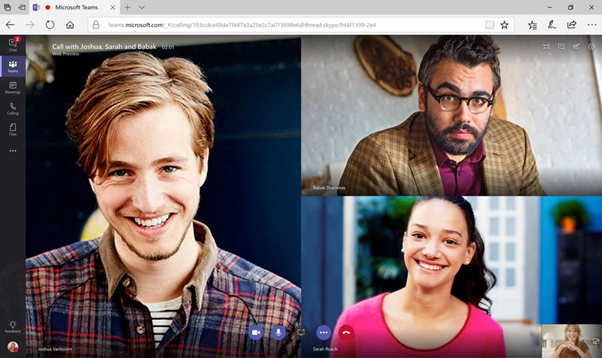
How are other healthcare organisations practically using the features in Microsoft Teams?
Virtual meetings
NHS Bury CCG is delivering board meetings from six practices, across four locations via Teams. They’ve seen a 40% increase in the efficiency of board meetings, and saved 18 hours this year by not travelling to face-to-face meetings
“We are much more efficient than we ever were. We haven’t physically met for over a year. All of our meetings take place over Teams, and all of our notes and actions are within Onenote.” – Mike Culshaw, Bury CCG
Screen-sharing
Mid Cheshire Hospitals NHS FT talked about their virtual MDT pilot for community Heart Failure and Cardiology. They use screen-sharing over Teams meetings to share access to internal systems and details. As a result, they’ve saved 48 hours of clinical and service manager time, and 504 miles of travel. This equates to £340 travel savings in a year with just a single MDT meeting flow.
“These MDTs ensure that our patients are getting the best quality and timeliest treatment to provide better outcomes.” – Amy Freeman, Mid Cheshire Hospitals NHS FT
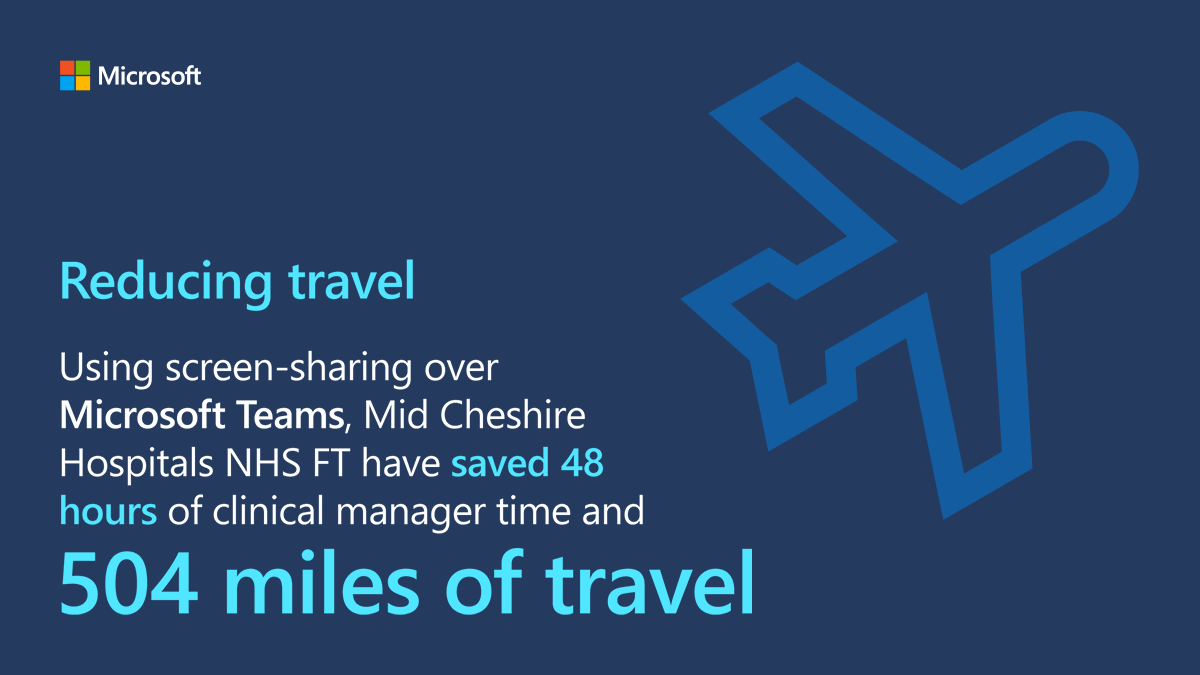
Digital notes
Teams is also used by Walsall Healthcare NHS Trust for a weekly pre-clinic discussion meeting for diabetes, as well as a weekly diabetes in children meeting group. By switching to digital notes, the the trust made savings on printing costs, as well as costs for a survey tool that can be now competed inside Teams with Forms, or Polly.
Bringing employees on-board with Microsoft Teams
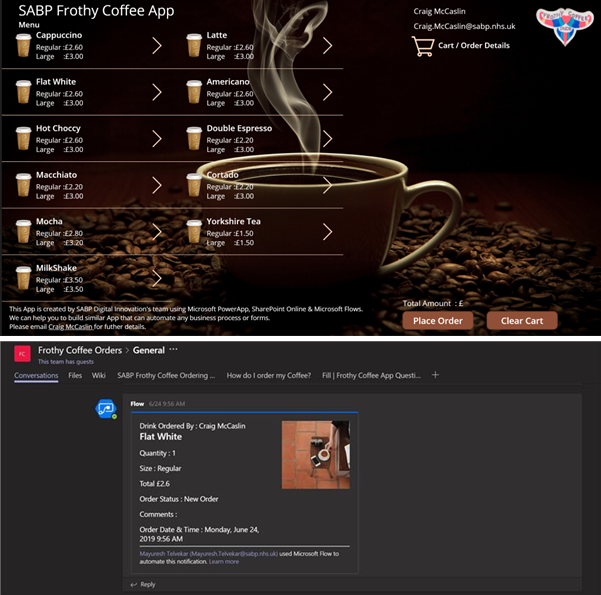
But Teams isn’t just about clinical scenarios. Our workshop also highlighted an entertaining use case showcasing one way you can bring employees onboard with Teams as a platform – and I just love it!
Surrey and Borders Partnership NHS FT wanted to show the executive team the power of Teams as a platform in a fun way. The site has a coffee van, and employees queue along with others for up to 20 minutes to get their much-deserved coffee. The only other alternative was to text your coffee order ahead of time. Neither seemed suitable, or ground-breaking.
Craig McCaslin, the foundation trust’s Head of Office 365 Development, decided to build a Frothy Coffee App to showcase the power of Office 365 and Teams. He explained: “I saw the coffee-ordering app as an opportunity to reduce time taken to get your drinks, expose users to PowerApps without them even realising, expose users to Teams, with the app on a tab within a Teams channel, and try out a few technical things – guest access, item ordering, and adaptive cards. I also wanted to see what the developers could do with Teams as a platform. To be an advert for the company, showing what we could do with the Microsoft products.”
The order was taken, with details recorded in a SharePoint list. A flow would create the adaptive card, which notified the coffee seller that an order was being placed, which was then acknowledged by a quick reply to the card. Employees could then bypass the people queuing to pick up their drinks and pay.
As we work together to scale and drive new ways of working in healthcare, I continue to collate the amazing scenarios from across the NHS.
Satya Nadella says about Microsoft “You join here, not to be cool, but to make others cool.” My new role with Microsoft Teams embodies this. Watching NHS trusts come together over these two days, discovering their real-life use cases, and their drive to make things better is really cool.
If you’d like to know more, or join our NHS Network for Teams and engineering, where we work together to grow, feel free to get in touch.
Find out more
Empower your care team with Microsoft Teams
Microsoft Teams for Healthcare
6 Office 365 tools to enhance productivity in the NHS
About the author
 Teams is the fastest growing app in Microsoft history, and healthcare organisations are pioneering its use to drive efficiencies. Kelly’s role is to align healthcare systems across Europe, their strategy and drive for patient-centric care with Microsoft Teams features and scenarios as a platform. Working in partnership with healthcare customers to tell their story of the transformation and impact that Teams as a platform can drive for clinical professionals and patients.
Teams is the fastest growing app in Microsoft history, and healthcare organisations are pioneering its use to drive efficiencies. Kelly’s role is to align healthcare systems across Europe, their strategy and drive for patient-centric care with Microsoft Teams features and scenarios as a platform. Working in partnership with healthcare customers to tell their story of the transformation and impact that Teams as a platform can drive for clinical professionals and patients.




